The brake is an indispensable part in every bicycle - a high-quality brake system allows you to stop the movement in the most critical situations and even save the life of the cyclist. From this article you will learn what varieties and brands of bicycle brakes exist, and also get acquainted with the intricacies of their choice and installation.

Types and their device
All varieties of bicycle brakes are divided into several groups with independent views.
Depending on the principle of operation, the brake systems are rim, disk, drum, roller, stirrup and tape.
Below will be described the principle of operation and device of each of these types.

Rim
Rim-type brakes include models with pads that, when braking, squeeze the rim of the bicycle wheel on both sides. The pressure of the pads on the rim leads to friction, which, depending on the pressure force, provides smooth or sharp braking. The command to the brake pads from the steering wheel is transmitted using special cables or hydraulic lines.
Today it is the most common type of bicycle brakes - it can be successfully used on both road and mountain bikes of any level.
Rim brakes include several independent varieties that differ in the type of attachment, the shape of the pads and are used in different types of bicycles.
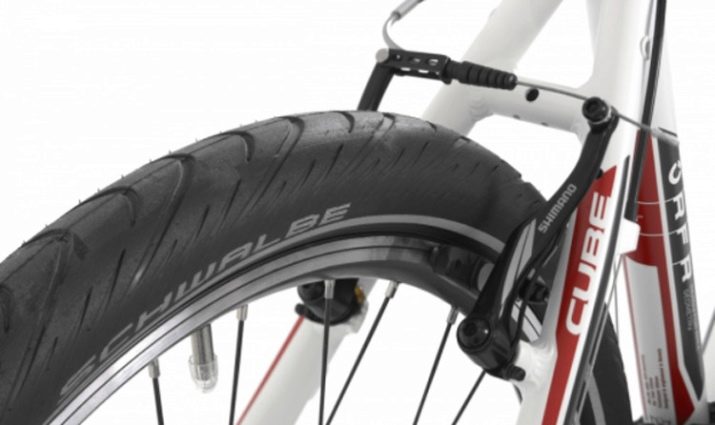
Mechanical rim brakes include several varieties.
- Vector or V-brake - Today, such brakes are considered very popular. They represent the fastening of levers and pads in the form of the letter V.
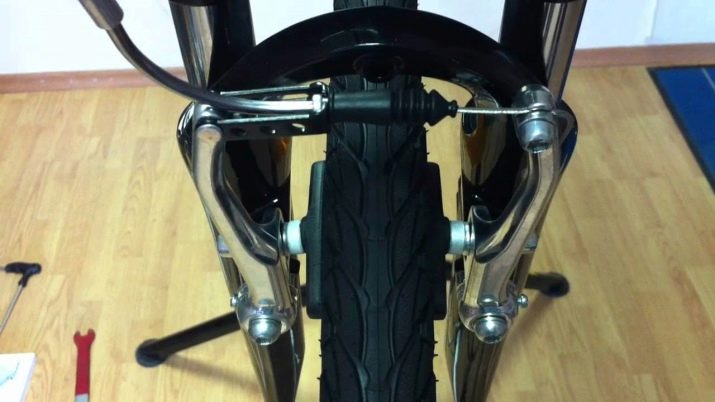
- Tick-borne (some call them "crabs") - These brakes were used in the USSR, today they are produced quite rarely and are installed mainly on the front wheels of road bikes. Characterized by mounting levers and pads in the form of the letter U.
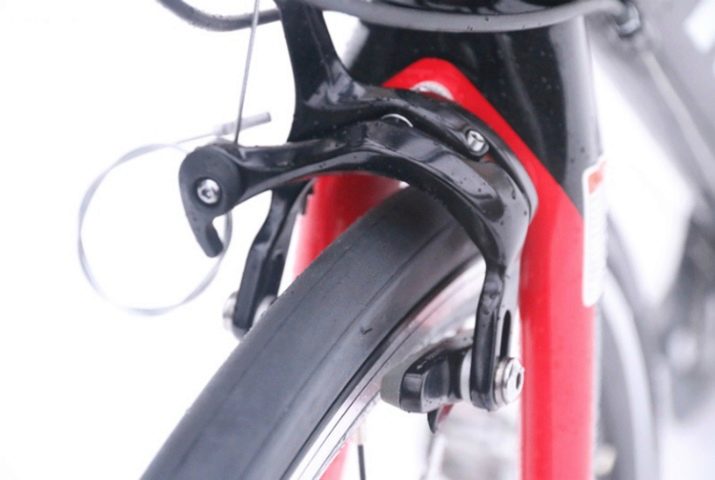
- Cantilever. Brakes of this type are considered the predecessors of V-brake and today are installed only on cyclocross bikes. Despite the outdated technology, the efficiency is no worse than other rim brakes, but they need to be fine-tuned.

The arrangement of hydraulic rim brakes is different from mechanical the presence of special hydraulic lines, through which the fluid from the bike handle is transmitted by force to the brake, which leads to braking.
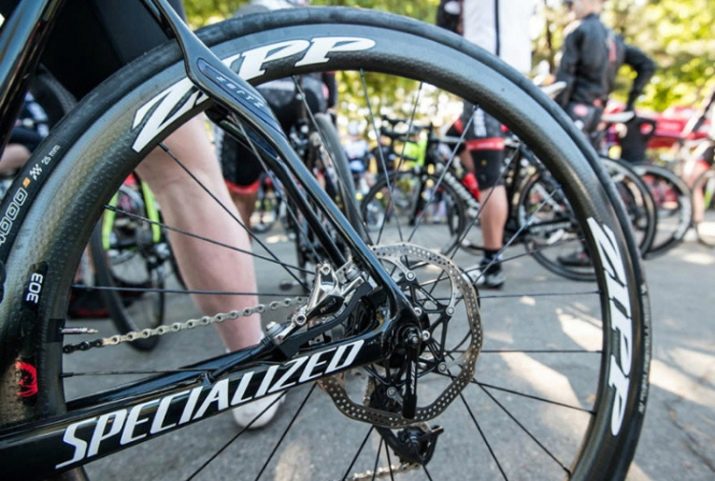
Rim brakes have both advantages and disadvantages.
Let's start with the pros.
- An acceptable price segment and just a huge selection for a variety of bicycles.
- During braking, it is the rim that assumes the entire load, while the wheel or hub is not damaged. In the long run, this increases the duration of use of the bike.
- With such braking, the rim heats up much less than the hub in the same disc brakes - all because of the larger area. This protects the bicycle rim from deformation.
- To install such brakes, you do not need to be an expert - almost everyone can pull and tighten the cables in any conditions (the main thing is that there are keys).
- Rim models are always very light and almost not felt. Some brake systems, for example, disc systems, can significantly increase the weight of a bicycle, which can greatly affect the speed of a bicycle and its usability.
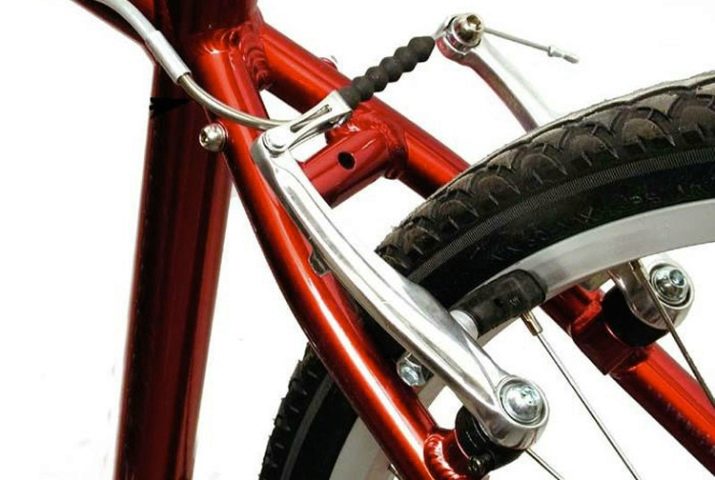
Cons are also observed.
- When driving on a dirty and wet road, the effectiveness of the rim brake is greatly reduced, which can lead to life-threatening consequences. Some athletes specifically make cutouts on the pads to remove moisture during movement in rainy weather.
- If the pads are not installed correctly, too rotated or pinched, they will constantly brake the wheel, touching the rim.
- About once every six months, depending on the intensity of cycling, the brake pads should be replaced (erased in places of friction). The same situation may apply to the wheel rim, however, it will be necessary to replace the rim no more than once every 2 years.
- Some V-brakes may warp feathers or the wheel frame over time. To avoid this, cyclists buy special frame amplifiers in the form of arcs.
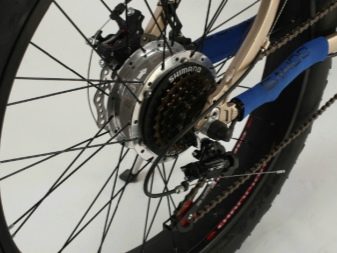

Disk
The design of the disk brake includes a steel disk located on the front or rear wheel hub (usually on the left), and the braking device itself, which, when a cable is pulled from the steering wheel, compresses the steel disk and slows the wheel itself.

These brakes also include several independent varieties.
- Mechanical. Braking through the force that is transmitted through standard cables.
- Hydraulic Instead of cables, hydraulic lines are used that supply fluid from the steering wheel to the caliper.
- Combined. They are devices made of standard cables, but with a hydraulic caliper.
Such units also have their positive and negative sides.


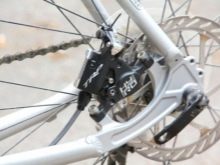
There are a lot of pluses.
- Unlike rim brakes, disc brakes are located in the middle of the wheel and are much less contaminated when driving.
- Disc brakes are believed to allow finer control over vehicle speeds - some cyclists call this improved modulation.
- The main difficulty when driving on rough roads is precisely the "eights" - situations where the wheel rim is slightly bent in some places and does not go completely straight. This can be a problem when using rim models, however, disc brakes work directly with the hub and do not lose from this efficiency.
- When using disc brakes, only the system of the brake itself is subject to wear - the rim, bushing or the wheel itself does not suffer.

But there are also disadvantages to such designs.
- The braking with the disc brake exerts a rather strong load on the spokes in the bicycle wheel, on the hub, which takes all the pressure, as well as on the fork of the wheel itself, which holds this hub.
- The arrangement of disc brakes is much more complicated than that of others. There are many more elements that can break, and it will be difficult to restore them in the field. The most common problems: bending the disc from falling bicycle, internal caliper breakage. It will be especially difficult to set up hydraulic disc brakes - you cannot do without special equipment for pumping fluid.
- Almost all disc brakes weigh a lot - all because of the sturdy and heavy materials of which the brake disc is made.
- Typically, such models are much more expensive than the same rim counterparts.
- The ingress of oily substances onto the disc significantly reduces the braking force.
- A disc brake caliper on some models may interfere with the installation of the same boot.

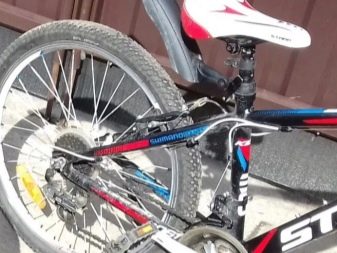
Drum
The device of such a brake is as follows: the brake system itself is located directly in the rear wheel hub.
The sleeve design is a drum, inside of which pads are also located.
When a signal is supplied from the cables, the pads burst inside the sleeve and clamp the movement of the brake drum.
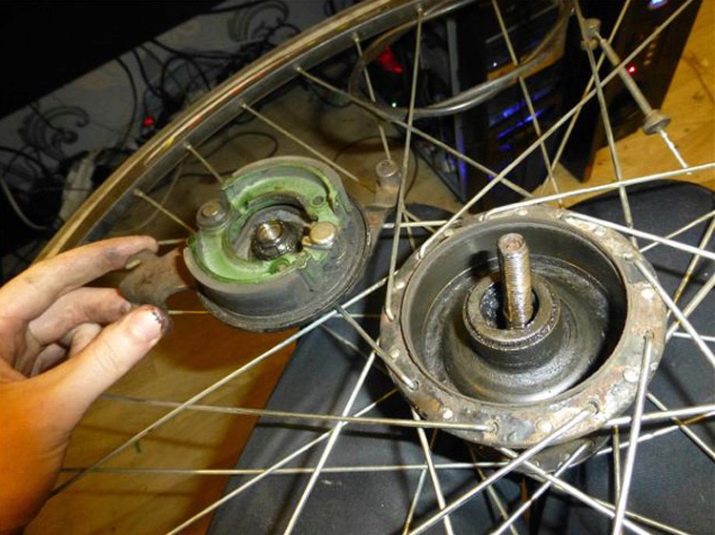
At the moment, there are only 2 types of such brakes.
- Manual Brake Drum Designswhere braking force is supplied through standard cables. Today, they are practically not used due to the enormous weight, dimensions and complexity of self-tuning.
- Foot operated systems - here the braking is triggered when the pedals rotate in the opposite direction. Typically, this type of braking is used in simple single-gear bikes.
Drum models today are not considered the most popular choice in professional cycling, since they have much more minuses than pluses.
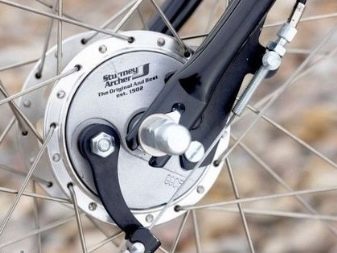
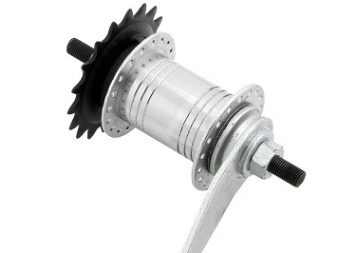
Pros:
- the device of drum brakes requires certain knowledge for proper installation, but it is so rarely broken that this installation is almost never required;
- it makes no difference to such brake systems whether it rains or snows outside - no weather conditions affect their performance;
- these models do not affect the wheel rim and will not conflict with the "eights".

We list and cons.
- Such braking systems can only be installed on 1-speed bikes. They cannot be combined with a standard gear selector.
- Efficiency and consistency of braking in such bikes is a serious question. With these brakes, you cannot brake quickly, which can be fatal.
- As already mentioned, such systems weigh a lot. This does not allow them to be installed on the same road bikes.
- Deformation of the drum in the sleeve during prolonged braking, for example, during a long exit from the hill, is possible.
- If the chain in bicycles with such a brake drops, you cannot brake in any way.
- These braking systems can only be mounted on the rear wheel, while a separate brake is required for the front.
- This type of braking has an enormous load on the rear hub and wheel spokes.
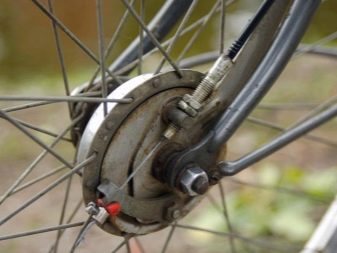
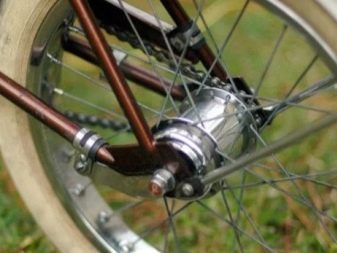
Roller
Inexperienced cyclists often confuse this variety with the drum, and there are reasons for this - these brake systems, indeed, are very similar in appearance, but are otherwise arranged in terms of the principle of operation.
Unlike drum brakes in roller models, there is a special eccentric lever that rotates and rests with its protrusions on the rollers.
Those, in turn, do not rotate, but press on the brake pads, which are bursting and pressing on the brake drum, inhibiting its rotation.The difference between the drum brake also lies in the fact that the roller brake operates on grease, which helps to preserve the pads and drum for a longer period.
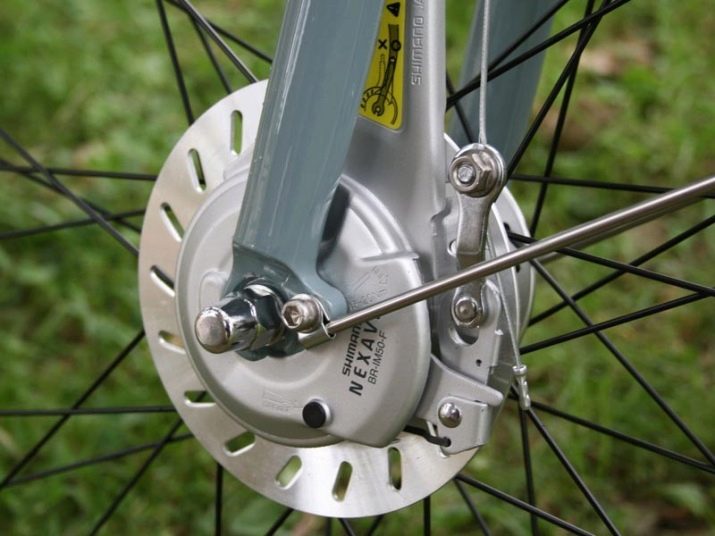
This name of the brake of this type was obtained precisely because it is the rollers that are used to transfer force to the brake pads.
These brakes have almost the same advantages as drum brakes, but are considered more powerful and thinner in terms of setting the braking force.
Among the shortcomings can be highlighted a lot of weight, very high prices for models and the complexity of manual installation / configuration in the field.
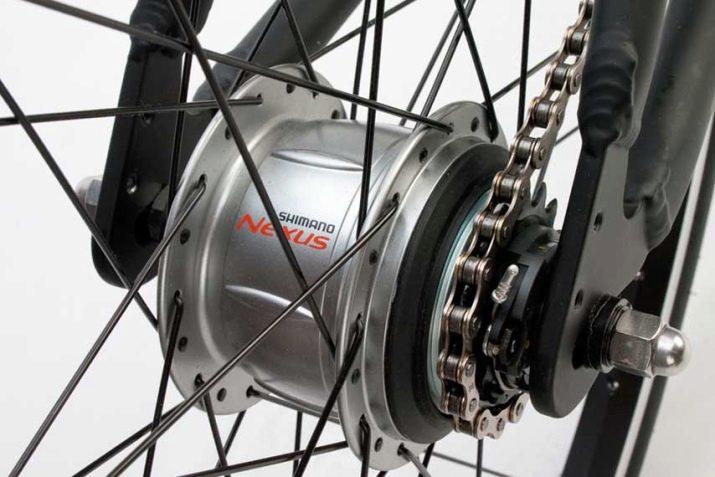
Stirrups
Today, such units are practically never used anywhere - you will not meet them in professional road or stunt bikes. Even before the 50s of the XX century, these brakes were installed on many Soviet, Indian and Chinese bicycles, but over time and with the development of drum and other brake systems, the need for stirrup brakes completely disappeared.
The device of such brakes is as follows: the brake shoe, which is attached to the fork of one of the sides, with the help of the braking force from the steering wheel (via cables) rubs directly against the tread of the wheel.
Among the minuses of these brakes, one can single out the gradual erasure of rubber on wheels (and only slick tires fit here), a lot of weight, and also the inability to use it on dirty roads.
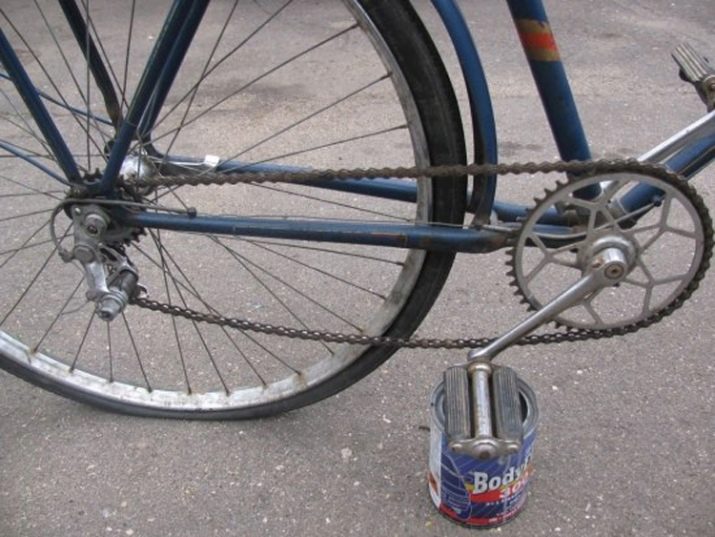
Tape
This type of brake is considered one of the oldest - it began to be used at the end of the XIX century. The principle of operation of such a system: on a standard brake drum there is a strong tape that is pulled through a cable and slows the rotation of the drum along the axis.
To install such brakes, special bushings are required, in addition, they are difficult to configure without a master. Despite these shortcomings, such models are actively produced to this day.
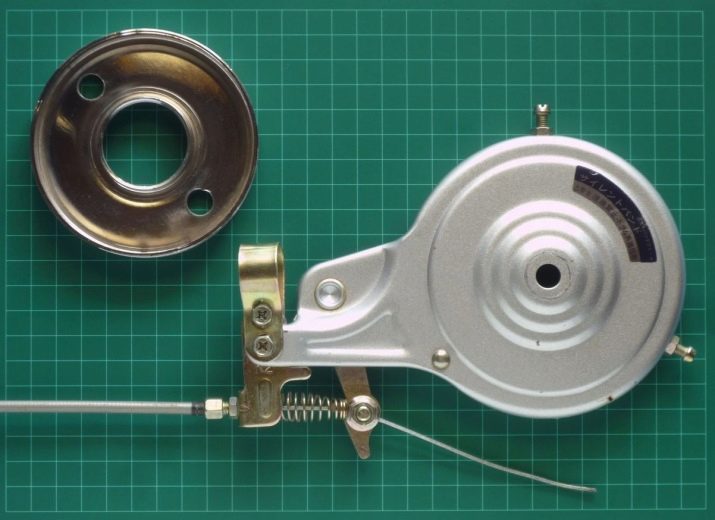
Manufacturers Overview
Among the manufacturers who create the best bicycle brakes, the following companies can be distinguished:
Tektro
Inexpensive and high-quality disc and rim brakes;
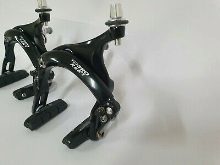
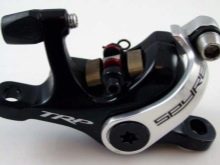

Shimano
A world famous company engaged in the creation of all types of brakes and other accessories for professional cycling;
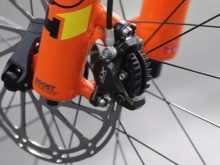


Promax, Sram and Avid
Hydraulic and mechanical disc brakes;
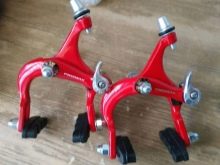
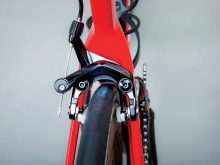

Formula
Hydraulic disc brakes;



Zoom

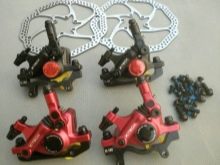
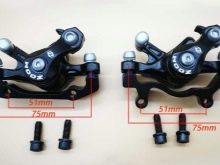
How to choose
As a rule, bicycles are already sold with a certain brake system, however, in case of breakdown or if you want to buy better brakes, cyclists are determined with the choice of a new one.
When choosing a particular bike brake, you need to rely on a number of factors.
- Destination. First you need to figure out why you need a bike. If you are going to ride a walking model from time to time within the city, then cheap drum brake systems will suit you.
For professional driving, it is best, of course, to use disc or rim models.


- Riding style. For athletes who regularly use the bike on long journeys, it is best to choose disc brakes rather than rim brakes. In disc models, there is no unnecessary load on the rim, in addition, disc brakes are more effective for prolonged and sudden braking.

- Type of terrain. A lot depends not only on the riding style, but also on the chosen place for cycling trips.
So, for easy and pleasure driving on a flat road, it is better to use rim models of brakes, but for mountain bikes it is better to find nothing of a high-quality disc brake.

- Athlete's weight. The more the cyclist weighs, the greater the load will be exerted on the brake, and the stronger it should be. In addition, the wire must be quite powerful to provide sharp braking - in this case, it is most often the hydraulic models that are chosen.
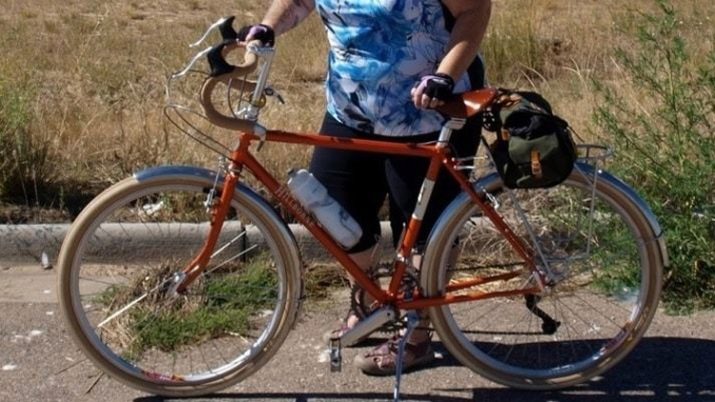
Installation Recommendations
It is the disc models that are considered the most popular brake systems today: they have a simple design and are quite simple to install.
The installation diagram of disk-type brakes consists of 5 main steps.
- Brake handles fixed on the steering wheel, their position is regulated by the hands of a cyclist. This procedure is usually carried out with a hexagon.
- Caliper (or a device that performs braking on the disk) is mounted in disk mounts on the frame components of the bicycle.
- Brake discs (rotors) mounted on the sleeve. For this, special bolts are usually used.
- Cable fixed in the brake handle, then placed in the "shirt".
- Using guides, the shirt is held straight to the caliper.
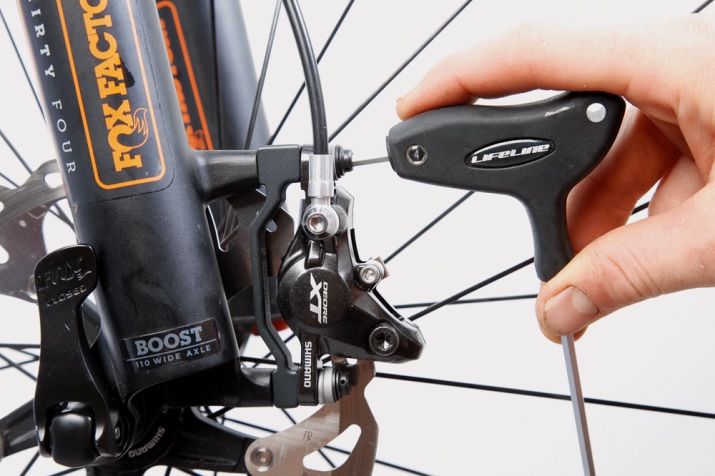
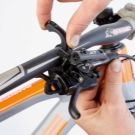

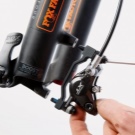
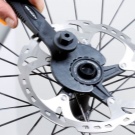

Then the disc brake is set up, during which follow a few points.
- The pads should not rub against the rotor while the wheel is spinning. If friction is present, you need to slightly unscrew the bolts in the caliper and move it in the direction of this block.
- The pads should extend equally on both sides. To adjust this, tighten the bolts one at a time.
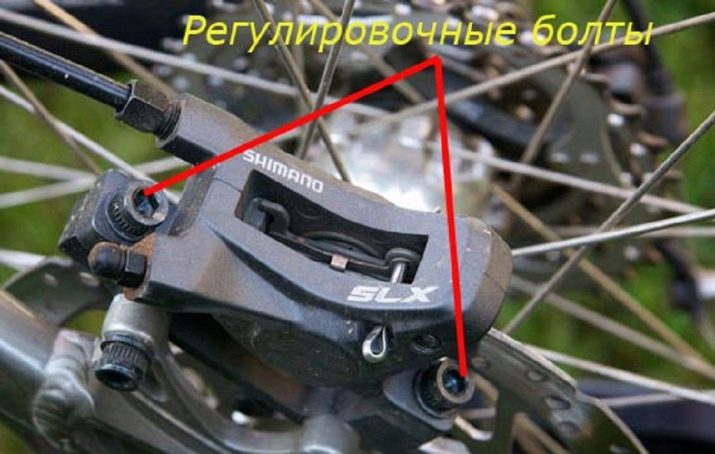
See what types of bike brakes are below.










